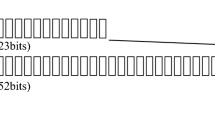Abstract
Floating-point error is one of the important factors that limit the accuracy of calculation. Programs using floating-point numbers are prone to accuracy problems by rounding and catastrophic cancelation. Mathematical library is an essential part of computer system. Its implementation is a common genre of floating-point calculation. Implementing these functions through polynomial expansion has algorithmic error in addition to rounding and catastrophic cancelation. Furthermore, ‘concise’ mathematical functions are frequently developed for applications with high-performance requirements. These ‘concise’ functions pay more attention to performance rather than accuracy. As a result, serious accuracy problems might occur, which will further affect the execution of programs. In this paper, a heuristic approach is designed to detect the maximum error of mathematical functions. It is theoretically proved in Sect. 2 that the maximum error of the mathematical functions generally occurs in small intervals. This finding is further proved by several experiments. The heuristic approach is designed based on it. Firstly, the large-scale test is used to gain the error distribution of functions. After that, the intervals, where the maximum error may occur (called ‘tingle intervals’ in this paper), are derived from the error distribution. At last, the high coverage test over tingle intervals is used to detect the maximum error. We evaluate the algorithm by analyzing mainstream math libraries (MKL, Glibc and Sunway TaihuLight). Our experiments show the approach can correctly deal with over 96.2% of mathematical functions. The approach designed in this paper has been used in the analysis and optimization of Sunway TaihuLight Math Library.









Similar content being viewed by others
References
Benz F (2012) A dynamic program analysis to find floating-point accuracy problems. ACM SIGPLAN Not 47(6):453–462
Aggarwal KK, Singh Y (2001) Software engineering. New International Publishers, New York
Brunie N, Dinechi FD, Kupriianova O, Lauter C (2015) Code generators for mathematical functions. In: IEEE Symposium on Computer Arithmetic, pp 66–73
Lee W, Sharma R, Aiken A (2016) Verify bit-manipulations of floating-point. In: Proceedings of the 37th ACM SIGPLAN Conference on Programming Language Design and Implementation, New York, NY, USA, pp 70–84
Chiang W-F et al (2017) Rigorous floating-point mixed-precision tuning. ACM SIGPLAN Not 52(1):300–315
Tang E, Zhang X, Meller NT, Chen Z, Li X (2017) Software numerical instability detection and diagnosis by combining stochastic and infinite-precision testing. IEEE Trans Softw Eng 43(10):975–994
Yi X et al (2017) Efficient global search for inputs triggering high floating-point inaccuracies. In: Asia-Pacific Software Engineering Conference (APSEC), 2017 24th. IEEE, pp 11–20
Titolo L et al (2018) An abstract interpretation framework for the round-off error analysis of floating-point programs. In: International Conference on Verification, Model Checking, and Abstract Interpretation. Springer, Cham, pp 516–537
Zou D et al (2015) A genetic algorithm for detecting significant floating-point inaccuracies. IEEE/ACM IEEE Int Conf Softw 1:529–539
Liew D, Schemmel D, Cadar C, Donaldson AF, Zahl R, Wehrle K (2017) Floating-point symbolic execution: a case study in N-version programming. In: 2017 32nd IEEE/ACM International Conference on Automated Software Engineering (ASE), pp 601–612
Yi X, Chen L, Mao X, Ji T (2017) Efficient global search for inputs triggering high floating-point inaccuracies. In: 2017 24th Asia-Pacific Software Engineering Conference (APSEC), pp 11–20
Wu X, Li L, Zhang J (2017) Symbolic execution with value-range analysis for floating-point exception detection. In: 2017 24th Asia-Pacific Software Engineering Conference (APSEC), pp 1–10
Kahan WV (1996) The improbability of probabilistic error analyses for numerical computations. http://www.cs.berkeley.edu/. Accessed 01 May 2018
Cornea M (2014) FSIN documentation improvements in the Intel 64 and IA-32 architectures software developers manual. https://software.intel.com/blogs/2014/10/09/fsin-documentation-improvements-in-the-intel-64-and-ia-32-architectures-software. Accessed 01 May 2018
Xu JC (2015) Testing platform for floating mathematical function libraries. J Softw 26(6):1306–1321
Acknowledgements
Funding was provided by National Key R&D Program High Performance Computing Key Projects (Grant No. 2016YFB0200503).
Author information
Authors and Affiliations
Corresponding author
Rights and permissions
About this article
Cite this article
Qi, H., Xu, J. & Guo, S. Detection of the maximum error of mathematical functions. J Supercomput 74, 6275–6290 (2018). https://doi.org/10.1007/s11227-018-2552-x
Published:
Issue Date:
DOI: https://doi.org/10.1007/s11227-018-2552-x




